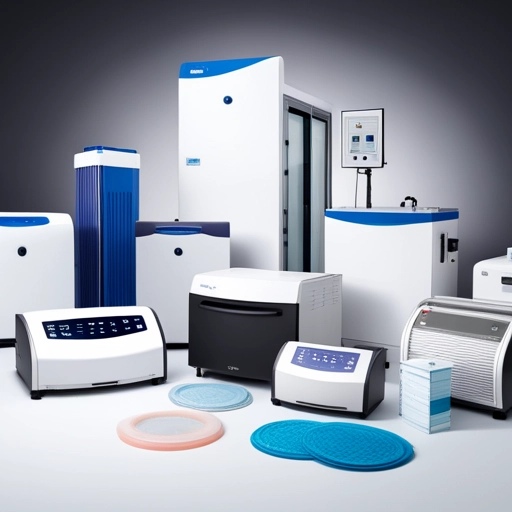Sterilization Quality Assurance: The Role of Monitoring Indicators
Sterilisation is a critical component of infection control in healthcare facilities, pharmaceutical manufacturing, laboratories, and food processing industries. It ensures that medical instruments, surgical tools, and other equipment remain free of harmful microorganisms that can cause infections and complications. However, the mere completion of a sterilization cycle does not guarantee success. To confirm that sterilisation has been effective, monitoring indicators play a vital role. These indicators help verify that sterilisation conditions—such as temperature, pressure, and exposure time—are met consistently.
This article explores the significance of sterilization quality assurance, the various types of monitoring indicators used, and how they contribute to maintaining high standards of infection control.
Why Is Sterilization Quality Assurance Important?
Sterilization quality assurance ensures patient safety, regulatory compliance, and operational efficiency. Any failure in the sterilization process can lead to severe consequences, including the transmission of infections and legal liabilities. By implementing a robust quality assurance system, healthcare facilities and industries can:

Ensure Patient and Staff Safety – Proper sterilization prevents infections and cross-contamination.
Comply with Regulatory Standards – Adhering to global standards such as those set by the FDA, CDC, and ISO helps avoid legal and financial repercussions.
Improve Operational Efficiency – Consistent sterilization reduces the risk of costly recalls and reprocessing of contaminated instruments.
Maintain Public Trust – A strong reputation for sterilization quality assurance reassures patients and stakeholders about the safety of medical procedures.
The Role of Monitoring Indicators in Sterilization
To ensure the effectiveness of sterilization, monitoring indicators are used to assess whether the required sterilization parameters have been met. These indicators are classified into three main categories:
1. Physical Monitoring Indicators
Physical indicators include gauges, displays, and charts that measure the key parameters of sterilization equipment. These indicators monitor:
Temperature – Ensures the sterilizer reaches and maintains the required heat level.
Pressure – Verifies that steam sterilizers generate the necessary pressure for effective sterilization.
Cycle Duration – Confirms that the instruments are exposed to sterilization conditions for the correct amount of time.
While physical indicators provide real-time feedback on sterilizer performance, they do not confirm microbial elimination.
2. Chemical Monitoring Indicators
Chemical indicators change colour when exposed to specific sterilization conditions, providing a visual confirmation that the sterilization process is functioning properly. They are classified into six types:
Type 1 (Process Indicators) – Used on the outside of packaging to differentiate processed and unprocessed items.
Type 2 (Bowie-Dick Test Packs) – Detects air removal efficiency in vacuum-assisted steam sterilizers.
Type 3 (Single-Parameter Indicators) – Reacts to one specific sterilization parameter (e.g., temperature).
Type 4 (Multi-Parameter Indicators) – Monitors multiple sterilization conditions.
Type 5 (Integrating Indicators) – Offers a high level of assurance by responding to all critical sterilization parameters.
Type 6 (Emulating Indicators) – Designed for specific sterilization cycles and provide precise validation.
Chemical indicators provide a quick, cost-effective way to confirm sterilization effectiveness. However, they do not replace biological monitoring.
3. Biological Monitoring Indicators
Biological indicators (BIs) are considered the gold standard for sterilization validation. They contain highly resistant bacterial spores that are exposed to sterilization conditions. After the cycle, the indicators are incubated to determine if any spores survived. If no bacterial growth is observed, the sterilization process is considered effective.
Biological indicators are particularly important for:
- Steam sterilization
- Ethylene oxide sterilization
- Hydrogen peroxide plasma sterilization
- Formaldehyde sterilization
Although biological indicators take longer to provide results, they offer the most reliable confirmation of sterilization efficacy.
Best Practices for Sterilization Monitoring
To ensure consistent and effective sterilization, healthcare facilities and industries should follow best practices, including:
Use a Combination of Indicators – No single indicator is sufficient; a combination of physical, chemical, and biological monitoring provides the highest level of assurance.
Routine Monitoring – Perform daily sterilizer checks and conduct biological monitoring at least weekly.
Record and Document Results – Maintain detailed records of sterilization cycles and test results for compliance and audits.
Train Staff Regularly – Educate personnel on proper sterilization techniques and the correct use of monitoring indicators.
Respond to Failures Immediately – If an indicator suggests incomplete sterilization, investigate and correct the issue before using the instruments.
Miracle Industries: A Leader in Sterilization Solutions
Miracle Industries is a trusted manufacturer, supplier, and distributor of high-quality infection control solutions, including advanced sterilization monitoring indicators. Since 2011, we have been committed to ensuring the highest safety and efficacy standards in healthcare, laboratory, and pharmaceutical environments. Our range of chemical and biological indicators provides precise validation of sterilization cycles, helping facilities maintain compliance and improve patient outcomes.
By integrating our innovative solutions into your sterilization processes, you can enhance quality assurance, reduce risks, and build confidence in infection control protocols.
Conclusion
Sterilization quality assurance is an essential aspect of infection control, protecting both patients and healthcare professionals. Monitoring indicators—physical, chemical, and biological—play a vital role in verifying the effectiveness of sterilization processes. By adopting best practices and leveraging high-quality monitoring solutions, facilities can ensure compliance, safety, and efficiency.
Sterilization monitoring is not just a regulatory requirement; it is a commitment to public health and safety. Facilities must remain vigilant, continually improving their sterilization protocols to prevent infections and safeguard lives.
Frequently Asked Questions (FAQs)
1. How often should biological indicators be used in sterilization monitoring?
Biological indicators should be used at least weekly for routine monitoring of sterilization equipment. For critical loads, such as implantable devices, every sterilization cycle should be tested using biological indicators.
2. What is the difference between chemical and biological indicators?
Chemical indicators provide immediate visual confirmation that sterilization parameters have been met, whereas biological indicators confirm the actual destruction of microbial spores, making them more reliable for sterilization validation.
3. What should I do if a sterilization monitoring indicator shows a failure?
If an indicator suggests incomplete sterilization, do not use the processed instruments. Investigate potential causes, such as sterilizer malfunction or improper loading, and reprocess the items using validated methods before use.




